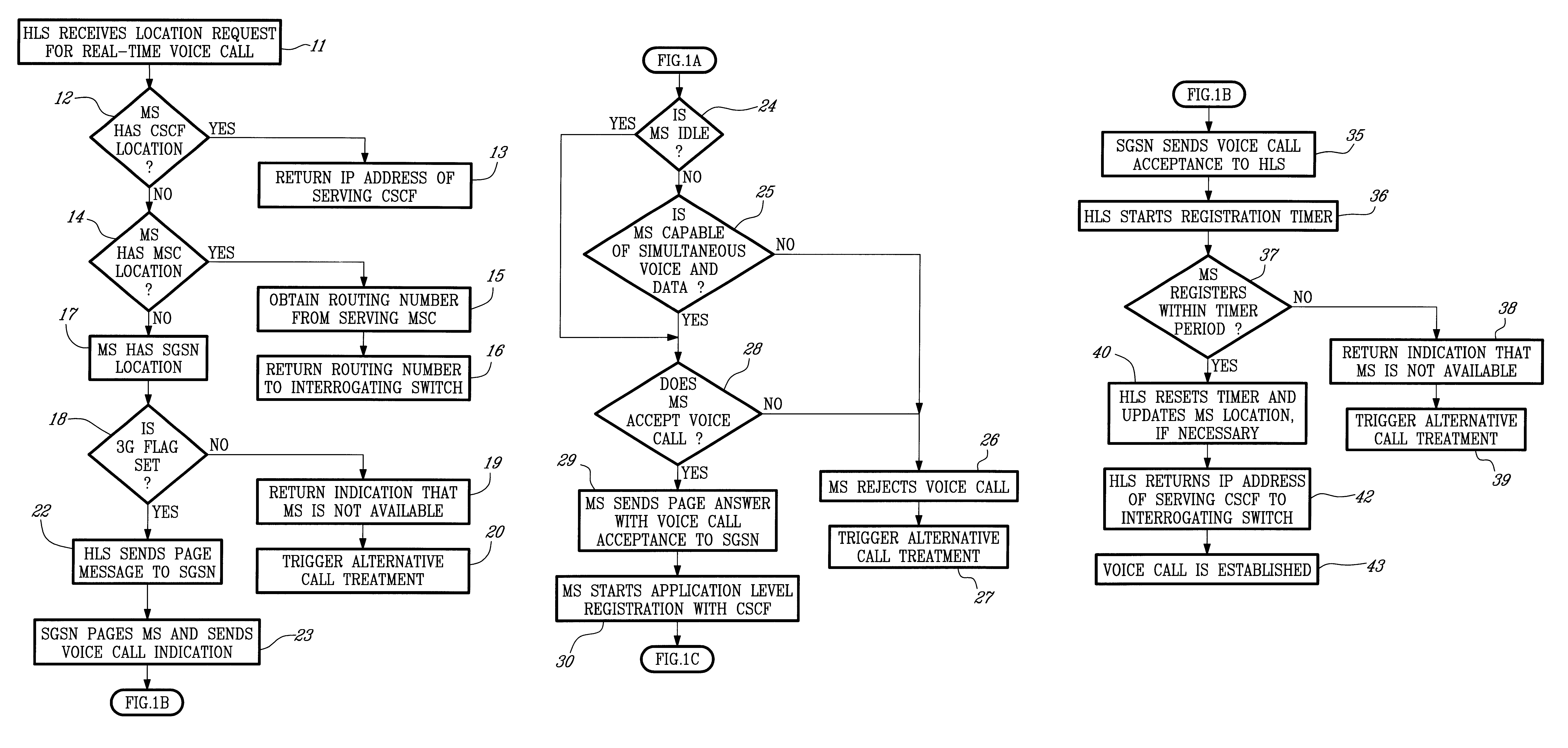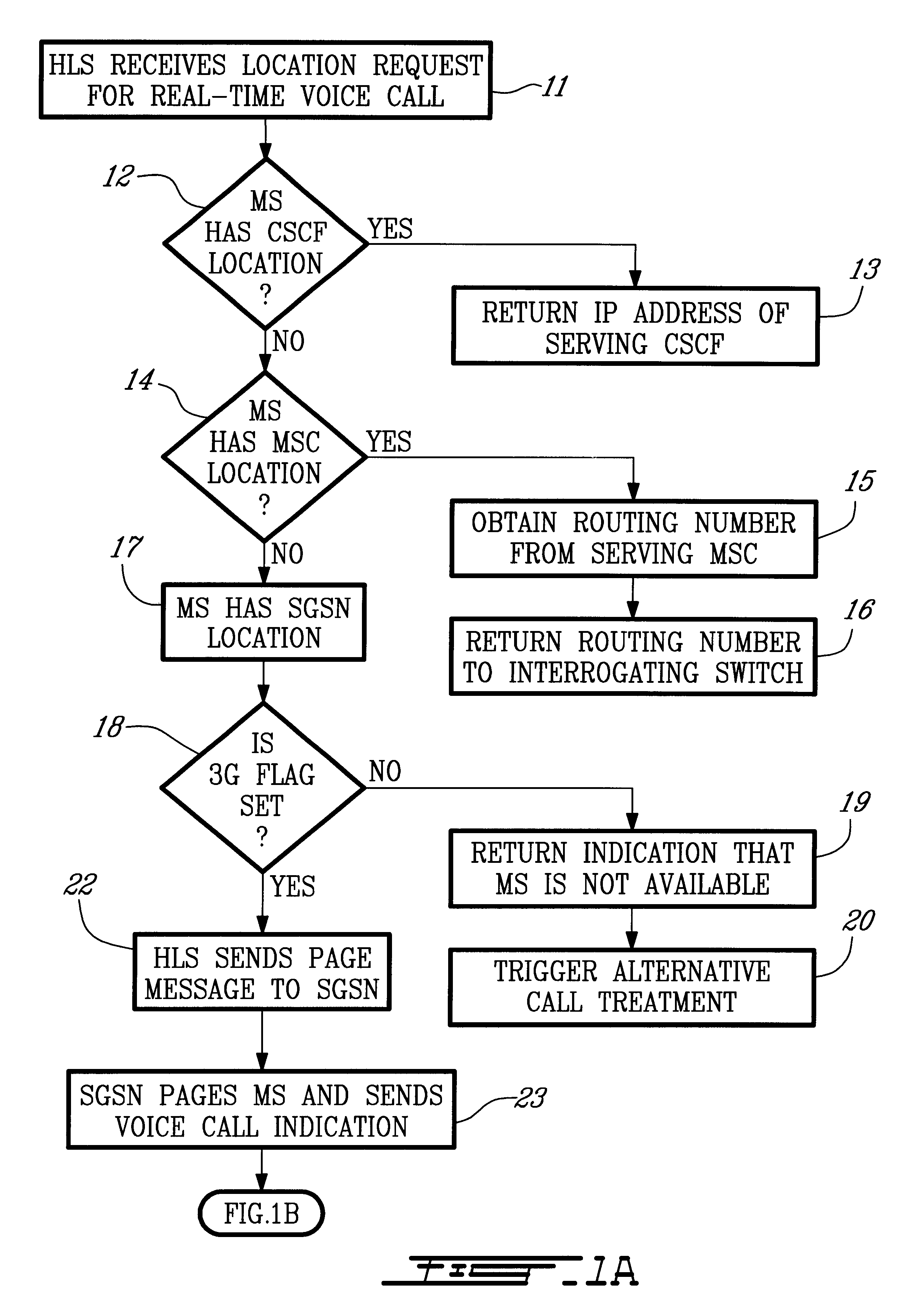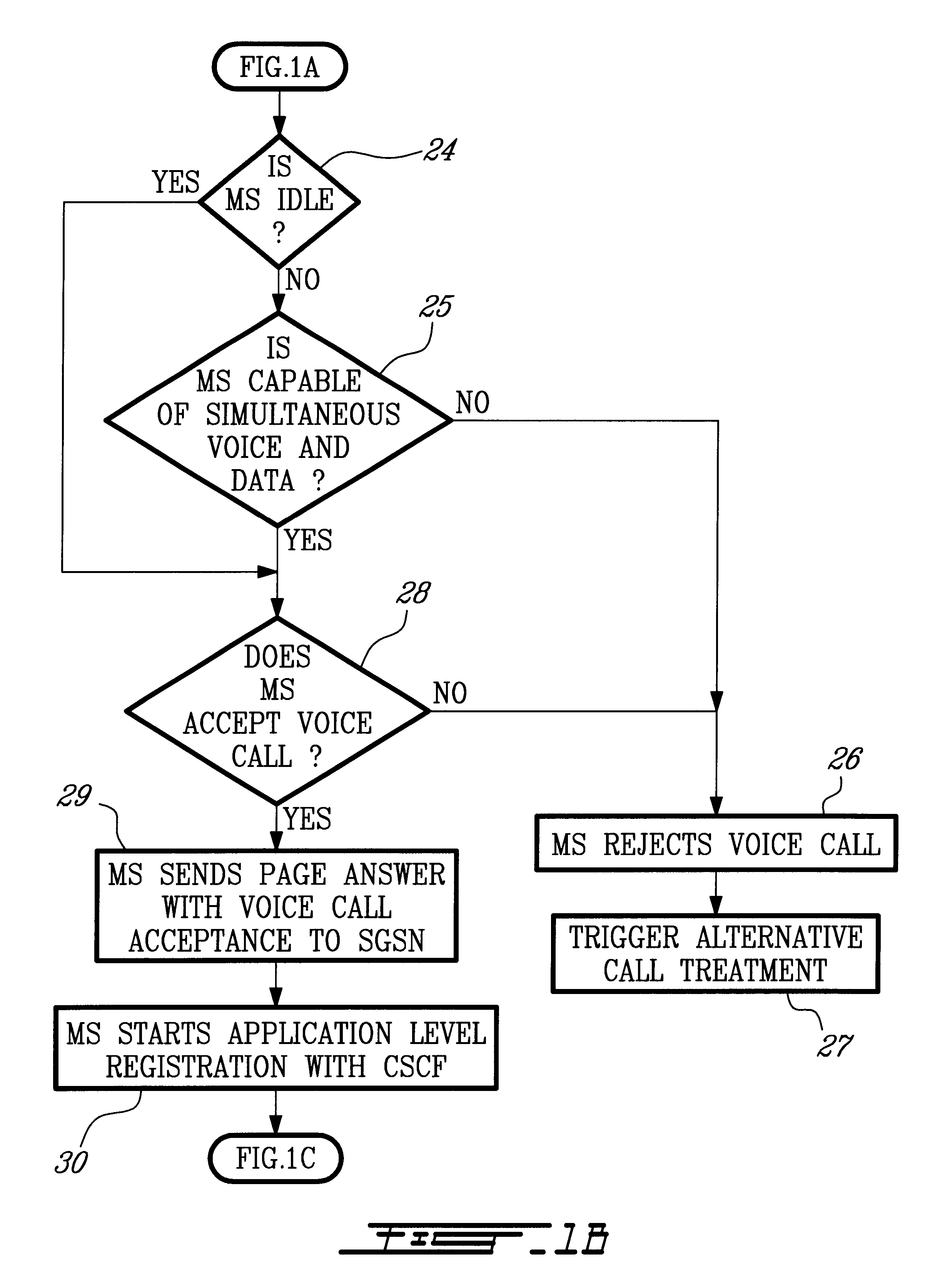Home location server and call processing method in a hybrid second/third generation radio telecommunications network
- Summary
- Abstract
- Description
- Claims
- Application Information
AI Technical Summary
Problems solved by technology
Method used
Image
Examples
Embodiment Construction
The present invention introduces a Home Location Server (HLS) that combines 2G functionality, 3G functionality, and control logic to determine what generation of switch the MS is located in, and to choose the correct call processing procedures for that generation of switch.
There are two types of registrations in a 3G network: bearer level registration and application level registration. Bearer level registration provides the MS with permission to access the network and perform pure data transfer for activities such as Web browsing or sending e-mail. Application level registration enables the MS to launch applications requiring greater network resources including real time capabilities, Quality of Service (QOS), etc., such as voice, video, or other multimedia applications. The application level registration provides needed information to the network server to determine whether the requesting MS is authorized for the requested application and whether proper billing can be done.
At bear...
PUM
 Login to View More
Login to View More Abstract
Description
Claims
Application Information
 Login to View More
Login to View More - R&D
- Intellectual Property
- Life Sciences
- Materials
- Tech Scout
- Unparalleled Data Quality
- Higher Quality Content
- 60% Fewer Hallucinations
Browse by: Latest US Patents, China's latest patents, Technical Efficacy Thesaurus, Application Domain, Technology Topic, Popular Technical Reports.
© 2025 PatSnap. All rights reserved.Legal|Privacy policy|Modern Slavery Act Transparency Statement|Sitemap|About US| Contact US: help@patsnap.com



